Setting up HomeCare on your TP-Link Router
Archer C2300 , Archer C5400 , Archer C4000 , Archer A20 , Archer AX50 , Archer AX11000 , Archer GX90 , Archer C2700 , Archer AX6000 , Archer C5400X
Recent updates may have expanded access to feature(s) discussed in this FAQ. Visit your product's support page, select the correct hardware version for your device, and check either the Datasheet or the firmware section for the latest improvements added to your product. Please note that product availability varies by region, and certain models may not be available in your region.
This guide will walk you through the process of setting up HomeCare on your TP-Link Router
Step 1: Launch a Web Browser (Example: Internet Explorer, Google Chrome, or Safari) and click on the address bar and type either “tplinkwifi.net” or “192.168.0.1”


Step 2: Log into your router. The default password is “admin”

Step 3: Check your firmware. Click Advanced – System Tools – Firmware Upgrade
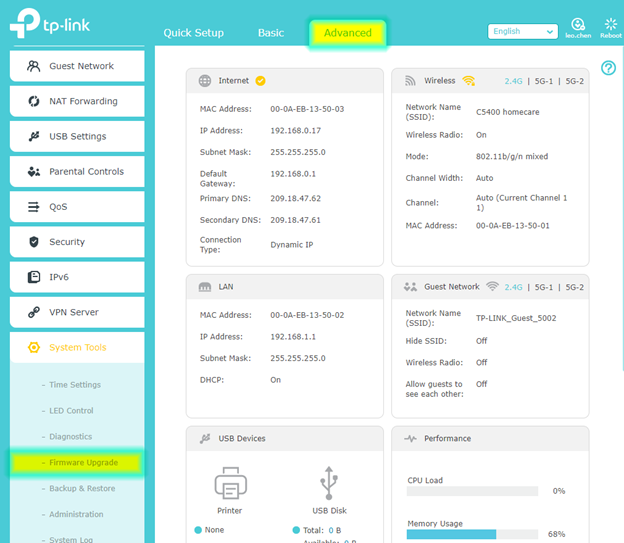
Step 4: Upgrade to the HomeCare is supported on ‘Build 20170504’ or later. If your router requires a firmware upgrade, click here.
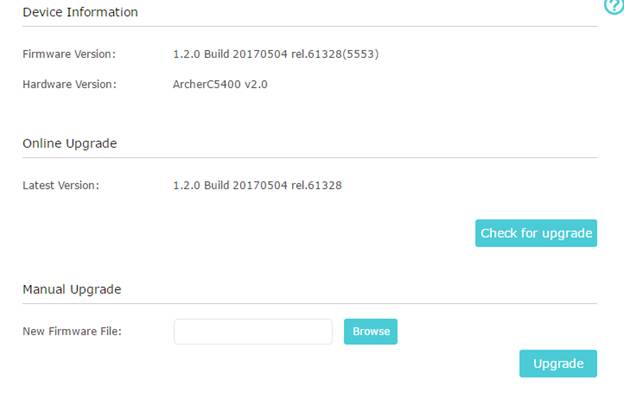
Step 5: Once you are on a compatible firmware, you will need to log back into your router. Use the log in password for your router. The default is “admin”.
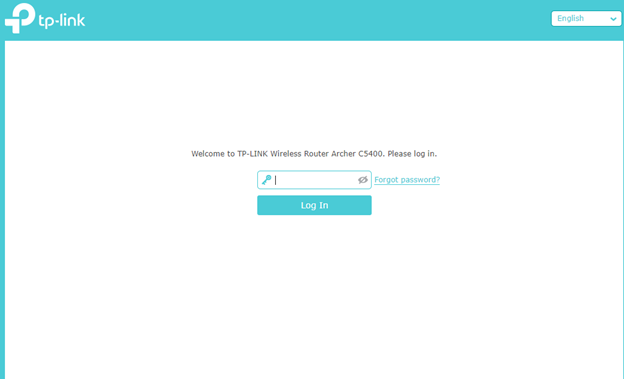
Step 6: Now to use the new enhanced features you will need to log into a TP-Link cloud account. Click on “TP-Link Cloud” under the “Basic” tab.
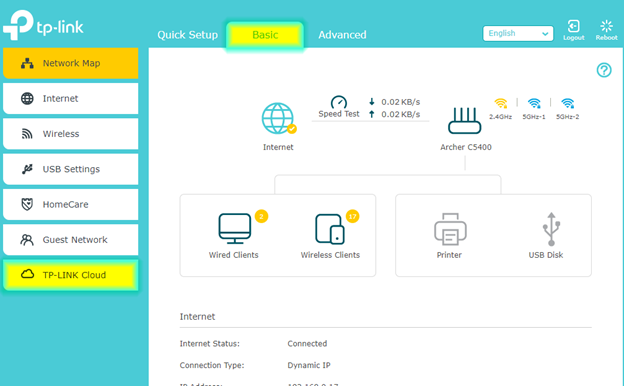
Step 7: Log into you TP-Link cloud account or if you do not have one, click “Register Now”. For steps on how to create a TP-Link cloud account click here.
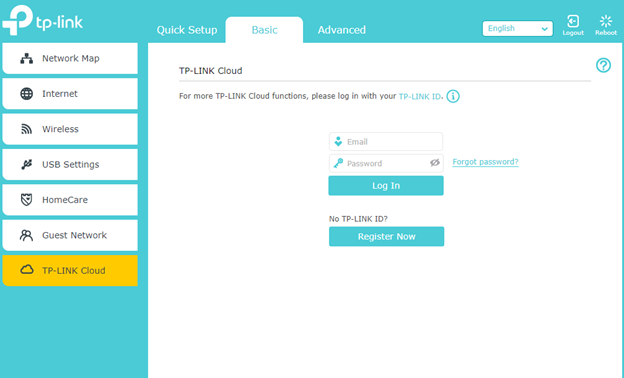
*Note: Future access to your router’s management page will require you to use your TP-Link Cloud email and password.
Step 8: Setup of Homecare services is now complete. From the “Basic” tab you can click on “Homecare” to check and configure your Homecare features.

Get to know more details of each function and configuration please go to Download Center to download the manual of your product.
Related FAQs
- Using HomeCare parental controls on a TP-Link Router
- Using HomeCare QoS features in a TP-Link Router
- What Antivirus Features are available in a HomeCare enabled TP-Link Router?
- Setting up the HomeCare QoS feature using the TP-Link Tether APP
- Can I still use the TP-Link HomeCare or HomeCare features after the complimentary expires?
- How to set up QoS on the TP-Link Wi-Fi router that doesn’t support HomeCare function
- How to set up QoS using TP-Link Wi-Fi router
- How to turn off the QoS feature on TP-Link Router
Is this faq useful?
Your feedback helps improve this site.
What’s your concern with this article?
- Dissatisfied with product
- Too Complicated
- Confusing Title
- Does not apply to me
- Too Vague
- Other
Thank you
We appreciate your feedback.
Click here to contact TP-Link technical support.
Recommend Products
TP-Link Community
Still need help? Search for answers, ask questions, and get help from TP-Link experts and other users around the world.
This website uses cookies to improve website navigation, analyze online activities and have the best possible user experience on our website. You can object to the use of cookies at any time. You can find more information in our privacy policy . Don’t show again
This website uses cookies to improve website navigation, analyze online activities and have the best possible user experience on our website. You can object to the use of cookies at any time. You can find more information in our privacy policy . Don’t show again
Basic Cookies
These cookies are necessary for the website to function and cannot be deactivated in your systems.
TP-Link
accepted_local_switcher, tp_privacy_base, tp_privacy_marketing, tp_smb-select-product_scence, tp_smb-select-product_scenceSimple, tp_smb-select-product_userChoice, tp_smb-select-product_userChoiceSimple, tp_smb-select-product_userInfo, tp_smb-select-product_userInfoSimple, tp_top-banner, tp_popup-bottom, tp_popup-center, tp_popup-right-middle, tp_popup-right-bottom, tp_productCategoryType
Livechat
__livechat, __lc2_cid, __lc2_cst, __lc_cid, __lc_cst, CASID
Youtube
id, VISITOR_INFO1_LIVE, LOGIN_INFO, SIDCC, SAPISID, APISID, SSID, SID, YSC, __Secure-1PSID, __Secure-1PAPISID, __Secure-1PSIDCC, __Secure-3PSID, __Secure-3PAPISID, __Secure-3PSIDCC, 1P_JAR, AEC, NID, OTZ
Analysis and Marketing Cookies
Analysis cookies enable us to analyze your activities on our website in order to improve and adapt the functionality of our website.
The marketing cookies can be set through our website by our advertising partners in order to create a profile of your interests and to show you relevant advertisements on other websites.
Google Analytics & Google Tag Manager
_gid, _ga_<container-id>, _ga, _gat_gtag_<container-id>
Google Ads & DoubleClick
test_cookie, _gcl_au
Meta Pixel
_fbp
Crazy Egg
cebsp_, _ce.s, _ce.clock_data, _ce.clock_event, cebs
lidc, AnalyticsSyncHistory, UserMatchHistory, bcookie, li_sugr, ln_or
